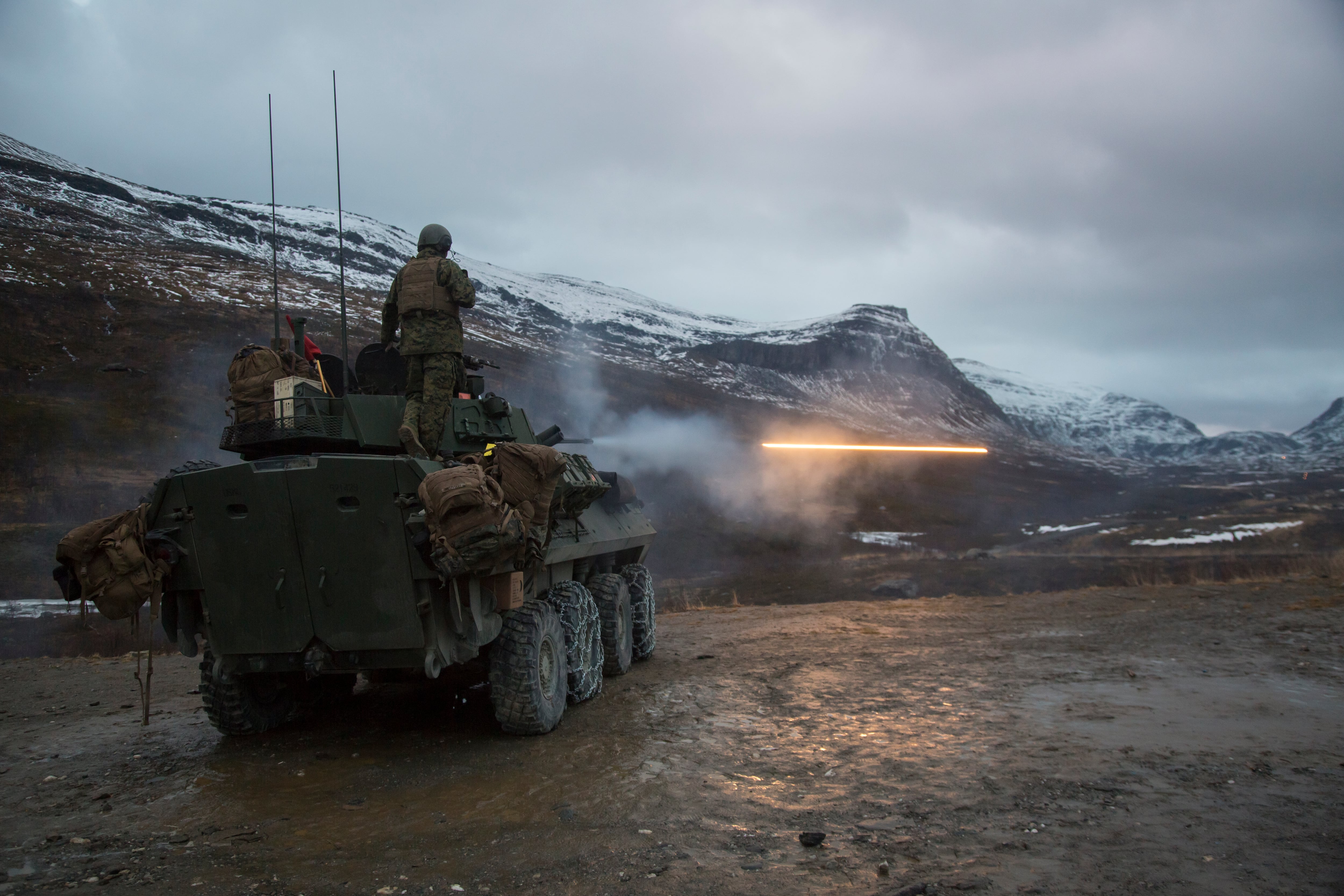The Marine Corps has been looking to replace its aging light armored vehicle, which has been the centerpiece of the mobile Marine infantry in recent decades.
A recent release from Marine Corps Systems Command announced that the armored reconnaissance vehicle is expected to begin replacing the legacy LAV by the late 2020s.
The eight-wheeled, 25mm-gun toting LAV is expected to age out of service by the 2030s, having been in the fleet since the early 1980s. It has seen action in the Panama invasion, Persian Gulf War and wars in Iraq and Afghanistan.
RELATED

Recent efforts to plus up the firepower for the LAV have included looking at drone suites to counter incoming threats and anti-tank firepower to make it able to harass enemy armor formations.
Marines have even strapped the LAV to ship decks to act as an additional, short-range defender for smaller threats that organic Navy ships systems don’t readily track, featured on recent deployment by the 31st Marine Expeditionary Unit out of Okinawa, Japan.
While durable, the LAV doesn’t quite hold up to the needs of the modern battlefield and near-peer competition.
“The ARV will be an advanced combat vehicle system, capable of fighting for information that balances competing capability demands to sense, shoot, move, communicate and remain transportable as part of the naval expeditionary force,” John “Steve” Myers, program manager for SysCom’s LAV portfolio, said in a command release.
At the 2017 Modern Day Marine military expo, held annually at Marine Corps Base Quantico, Lt. Gen. Robert Walsh, then commanding general of Marine Corps Combat Development Command, told attendees that the Corps envisioned the LAV replacement as a sort of F-35-type enhancement for ground forces.
“We need to look at something like the F-35,” he said. “You can clearly see a generational change when you go from AV-8 Harriers and F/A-18 Hornets to the F-35.”
The concept would make the platform a sensor-based system that could trade off firing missions through ground and air elements both manned and unmanned. That’s not entirely new. A similar initiative is being developed for the brand new amphibious combat vehicle, the replacement for the decades old amphibious assault vehicle, a primary ship-to-shore connector for Marines.
The LAV Way-Ahead program was established in 2016, according to the release. And it has fallen under the Office of Naval Research as its own science and technology program.
ONR is in a science and technology phase conducting advanced technology research and development, modeling and simulation, whole system trade studies and a full-scale technology demonstrator fabrication and evaluation, according to the release.
That will help the Corps best understand its requirements and get industry jumpstarted into development, according to the release.
In May, the LAV program manager will put out a request for information, which typically gives industry broad strokes and specifications that the military is looking for in its efforts.
“This vehicle will equip the Light Armored Reconnaissance Battalion within the Marine Divisions to perform combined arms, all-weather, sustained reconnaissance and security missions in support of the ground combat element,” Myers said. “It’s expected to be a transformational capability for the Marine Corps.”
Todd South has written about crime, courts, government and the military for multiple publications since 2004 and was named a 2014 Pulitzer finalist for a co-written project on witness intimidation. Todd is a Marine veteran of the Iraq War.





